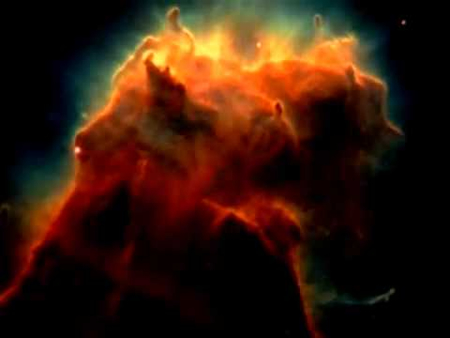
All life can be traced back to some single-celled organism in the early Archean sea. Today – nearly 4 billion years later – you and I find ourselves sharing the planet with elephants and whales, and over 8 million other eukaryotic species. Clearly, we’re all interrelated, but are we part of a single and absolute totality, a common being? Are we like the hundreds of different types of cells in our body that are constantly dying and being replaced, part of a complex organism greater than ourselves?
If we could see before the first single-cell organism, and after the last man and woman, only you would remain — you, the Great Face behind, that consciousness whose mode of thinking that contains the world.
Anyone who has witnessed the birth of a child, or watched a bird or turtle hatch from an egg, understands the miraculous nature of the event. A handful of dead material is transformed into a living, conscious creature. It’s true, the atoms – and the elementary particles that make them up – can be traced back to the Big Bang. But the hard problem of consciousness is the problem of explaining how a qualitative, subjective experience occurs from a physical process at all. There is nothing in modern physics that explains how a group of molecules in your brain creates consciousness. The beauty of a flower, the miracle of falling in love, the taste of a delicious meal, these are a scientific mystery on par with the origins of the universe.
Consciousness is like an embryonic stem cell, the master cell of the body, which – instead of giving rise to muscle, bone and all the other tissues and organs of the body – gives rise to the biodiversity around us, to the entire ecosystem of the planet.
When you think of a living organism, you think of how its parts operate as a unified whole, much like the workings of a fine watch. For instance, the cells in leaves produce food for a plant, converting the energy in sunlight into chemical energy that it can use as food. The cells in its stems and branches transport food and water from the leaves and roots to the whole organism. Of course, instead of branches, we vertebrates have bones for support, and muscles that give us the ability to locomote, to hunt and scavenge for food. This dynamic cellular interrelationship occurs at the interspecies level, as well, not only in our gut but on a planet-wide scale. We oxygen-breathing lifeforms continuously inhale oxygen (O2) and then exhale carbon dioxide (CO2); plants then take in the CO2 and use it in their photosynthesis process and in turn give off or “exhale” oxygen.
But there’s a lot more to it than that. We animals interpret the world using space and time — “sensitive concepts,” which, according to biocentrism, are forms in the mind, not hard, external realities. Indeed, with the advent of quantum mechanics, the old materialistic worldview has started to collapse. Alas! The mass of accumulated evidence – the double-slit experiment, quantum entanglement and the work of quantum logic and Schrodinger’s cat, among others – has the weight of a boulder.
At first glance, it seems bizarre that a frog in the rain forest or a dolphin in the ocean should be directly connected to us. But they are the subjects of the same reality that interested John Bell, the physicist who proposed an experiment, verified by Alain Aspect and his colleagues in 1982, that showed once and for all that at least on a quantum level, what happens locally is affected by nonlocal events. Surely this is what Spinoza predicted when he contended that consciousness cannot exist simply in space and time, and at the same time be aware, as it is, of the interrelations of all parts of space and time.
Our individual separateness in space and time (as, for instance, the apatosaurus and velociraptors of the Jurassic Period, the pandas in China, or the mountain gorillas of East Africa) is, in a sense, illusory. We are all melted together, parts of an organism that transcends the walls of space and time. This is not, you understand, a fanciful metaphor. It is a reality. I have learned, as a biologist and biocentrist, that life is a complex play of cells, some that are around when you’re young, some when you’re old, but that all, regardless of species, are parts of one organism expanding and contracting in space and time in whatever shape and form it can.
“I would say,” said Loren Eiseley, the great anthropologist and natural science writer, “that if ‘dead’ matter has reared up this curious landscape of fiddling crickets, song sparrows, and wondering men, it must be plain even to the most devoted materialist that the matter of which he speaks contains amazing, if not dreadful powers, and may not impossibly be, as [Thomas] Hardy has suggested, ‘but one mask of many worn by the Great Face behind.’”
Eiseley and Hardy were right. If we could see behind the fiddling crickets and song sparrows, before the first single-cell organism, and after the last man and woman, only you would remain — you, the Great Face behind, that consciousness whose mode of thinking contains the frog, the dolphin and the whales. Nay, that contains the world.
“Biocentrism” (BenBella Books) lays out Lanza’s theory of everything.